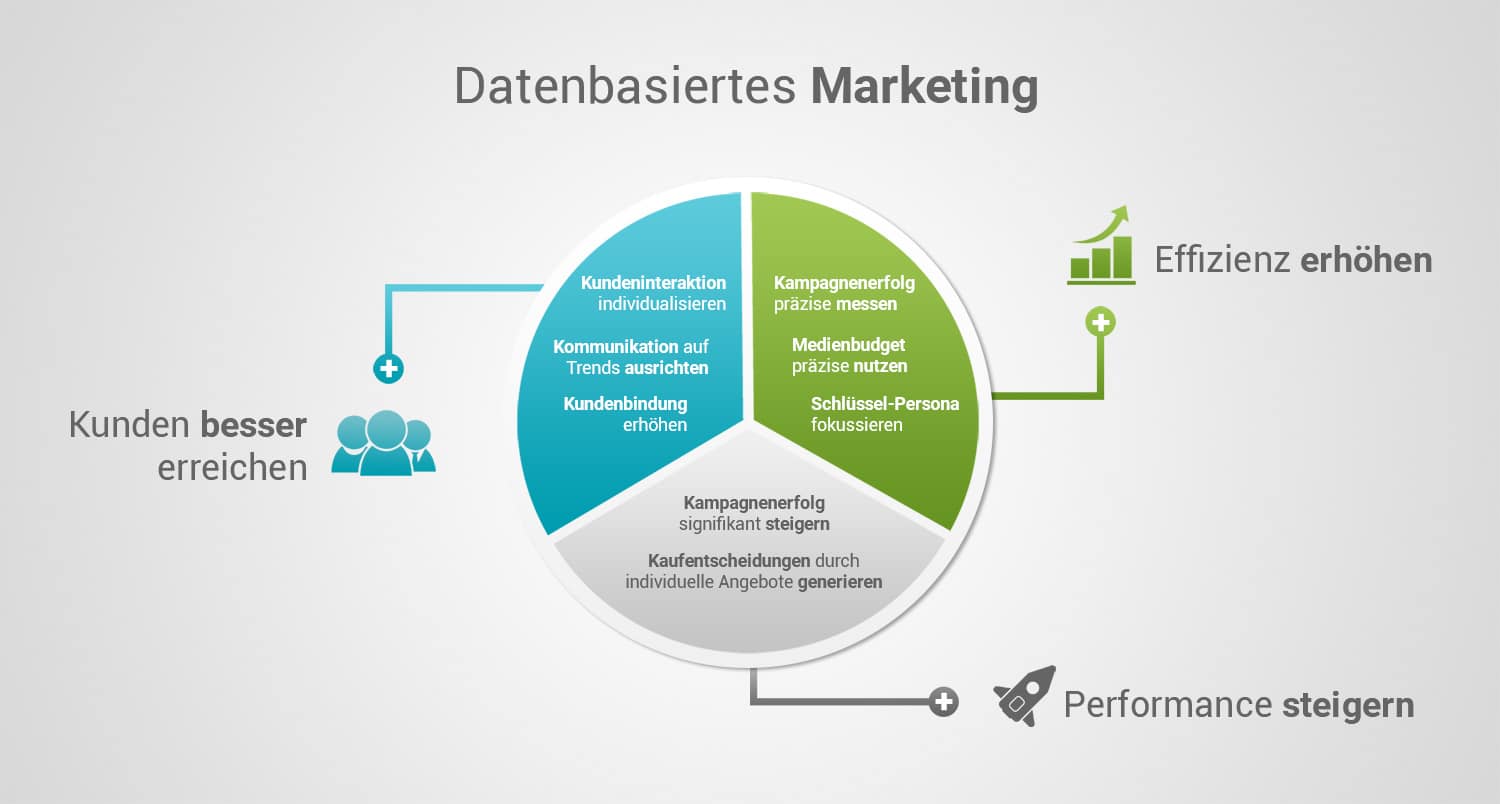Targeted marketing is the basic prerequisite for a successful business venture. In the digital age data-driven marketing plays a crucial role in this and is becoming increasingly important. The virtual footprints of customers and consumers provide valuable information for companies. But how exactly can you make the best use of this data to optimize your marketing efforts? Here are 5 concrete tips for getting started with data-driven marketing. In this context, we're talking about basic structures and the quality of the collected data, among other things.

1. Create professional framework conditions
At the beginning of all considerations is the technical infrastructure. Those who have no experience in collecting customer data can use the services of external service providers. Also in terms of Privacy and safety, there is no room for compromise.
Anyone who disregards the legal framework guidelines risks warnings and financial penalties.
The technical and organizational effort of data-driven marketing should therefore not be underestimated. Ideally, you should set up your own competence team and define a fixed budget. In this way, you form the Foundation for clear responsibilities and successful marketing campaigns based on customer data.
2. Define individual goals
Both the generation and the use of customer data can be designed variably. The Determination concrete goals is therefore of great importance for effective work processes. With this approach, you don't waste unnecessary time and don't get lost in the endless expanses of the data world. For example, if you want to collect customer information on specific product groups, you need to filter the data accordingly.
Besides the Purchasing behavior customer improvement requests also act as important adjusting screws in data-driven marketing. Data sets from customer surveys and personal feedback are suitable for this purpose, for example. Only specifically selected data can make a valuable contribution to successful campaigns, which underscores the importance of precise target definition.

3. Make dynamic adjustments
Data-driven marketing allows you to get to know your customers and better understand their buying behavior. For maximum success with the associated campaigns, it is important to avoid rigid systems and to constantly readjust the strategy. After all, the online world and the needs of customers are in a constant state of flux.
In the form of regular analyses and adjustments, you can react flexibly to these changes. The result is an ongoing Optimization of marketing measures and a product range that matches current consumer behavior. Customer needs become transparent and personalized campaigns allow the Increase conversion rate effectively.
4. Quality before quantity
A large amount of data alone does not promise target-oriented marketing. Rather, it is the Quality of the collected datathat determines the success or failure of your campaigns. Only by linking multiple data sources can reliable conclusions be drawn about the needs and behavior of customers.
The meaningfulness of the data is therefore always the focus and is the origin of professional data-driven marketing.
As you gain more experience, your understanding of data quality will increase. Through the Use of special filters you get the data sets you need for your company and can optimize the advertising measures step by step.

5. Use effective tools
Different tools come into question for the tasks of data-driven marketing. For general web analytics, for example, the following are suitable Google Analytics and the Google Search Console. For the purpose of Social media listings on the other hand, we recommend programs such as Brandwatch, Sysomos and Buzzsumo. Purchasing decisions are increasingly made on social networks, which shows the importance of this aspect.
For reporting and analysis you can use tools like DataHero, Qlik or Domo use. Thanks to the enormous range of different software, you can find the perfect solution for every requirement profile. Compare the different tools at your leisure and familiarize yourself with the individual features.
Final conclusion on the topic of data-driven marketing
Overall, it can be said that data-driven marketing offers a variety of advantages. As a result, you base your marketing measures on the real buying behavior of your customers. As a result, your advertising can be more targeted and personal design.
Almost every company in every industry can benefit from data-driven marketing and make better use of its advertising budget. The associated technologies are becoming increasingly intelligent and far-reaching, so the development is far from over. Data-driven marketing is revolutionizing the planning of advertising measures and offers companies completely new opportunities.
At the beginning, the complex data sets and the large selection of tools can be overwhelming. However, if you take all the listed hints and tips to heart, nothing will stand in the way of a successful implementation.

Are you interested in data-driven marketing and have questions about individual aspects? Then our team will be happy to assist you. Simply contact us and we will personally take care of your request. You can find the most important recommendations again in the following overview:
- create a technical framework
- Cooperate with external service providers when necessary
- Define concrete goals
- dynamic adjustments
- Pay attention to the significance of the data
- Use useful tools





